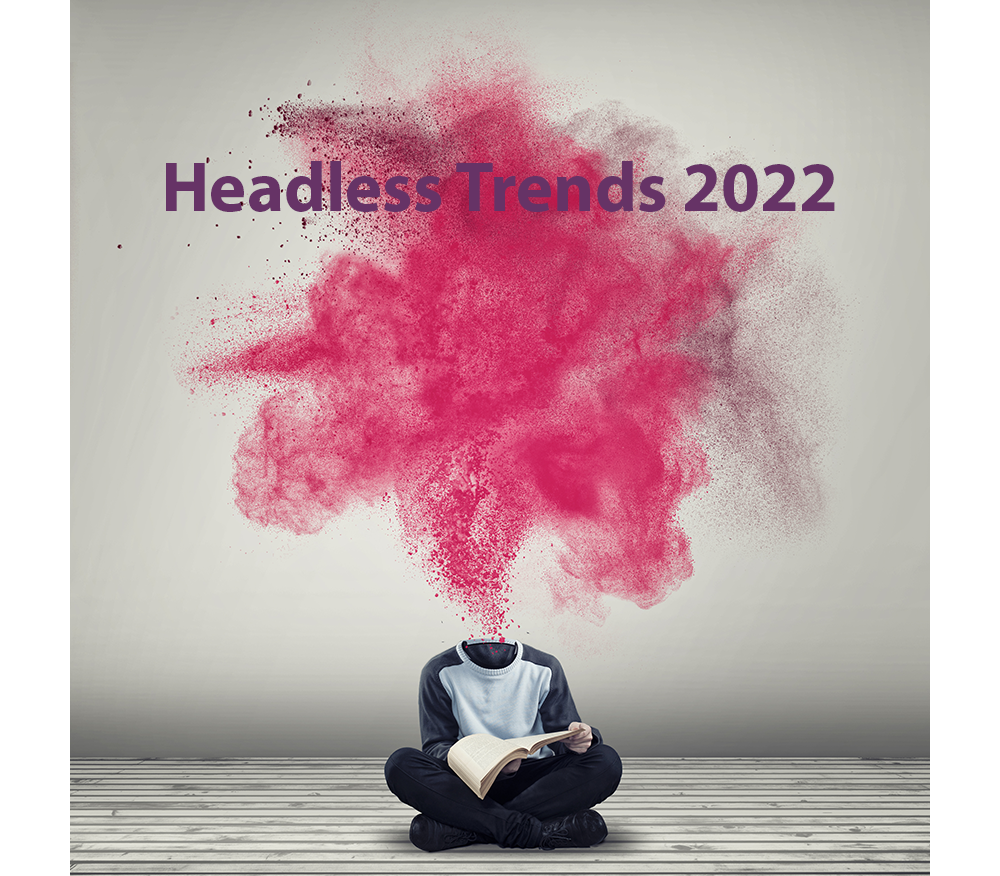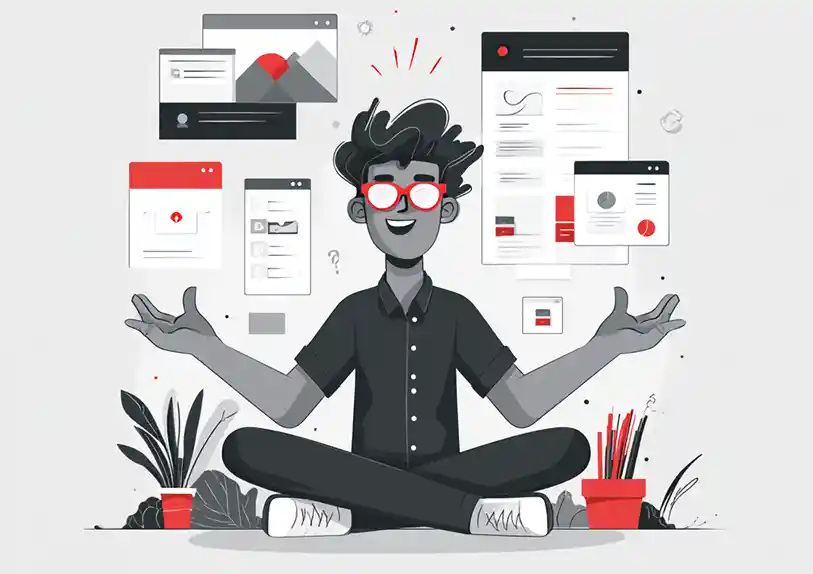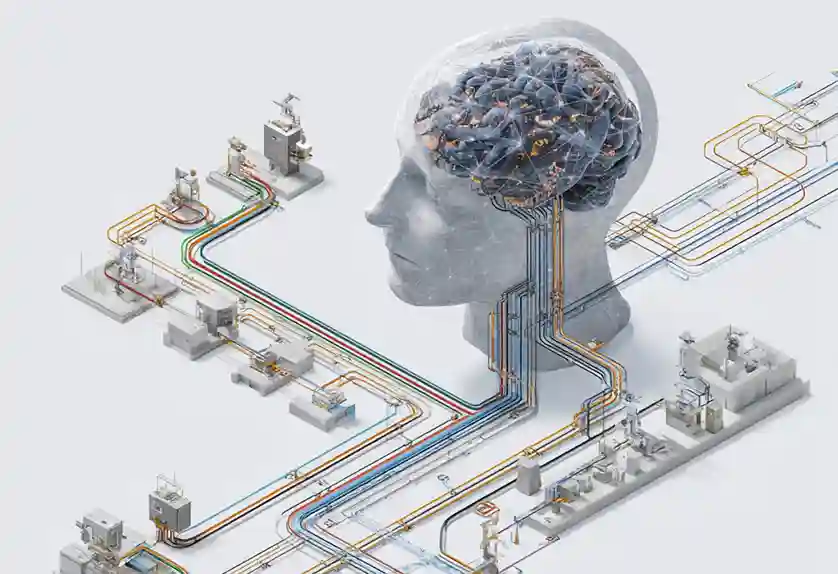Does it seem like all of your competitors are losing their heads? That might be because headless architecture has been on the rise as organizations uncover the benefits of a front-end UI/UX layer separate from the back-end application and data/content stores can mean for content management, commerce, and overall customer experience. If you want to be ready to tackle the rest of 2022 with confidence, then you should pay attention to these headless architecture trends.
- More IoT
- Multiple User Interfaces
- Composability
- Everything API-First
- Headless Platforms With a Frontend
- Implementing Ops Culture
- Custom Content APIs
- Increasing GraphQL Adoption
More IoT
The Internet of Things (IoT) is no longer a new futuristic concept. From Alexa devices to connected cars to kitchen appliances and smart TVs, IoT is clearly impacting our lives and will continue to do so. Many companies adopt headless architecture in order to capitalize on this technology, and deliver content to their customers. Further, the data they can gather on the customer experience through them is invaluable. According to Adam Crossling - Marketing Manager at www.zenzero.co.uk, successful integration of IoT devices into multiple locations will be critical:
“Integration of IoT is critical to the business automation revolution, affecting end-level computers, data centers, and customer experience. Without establishing links to external sources, IoT integration enables ERP systems to collect, store, and process enormous amounts of data in real-time from new, external endpoints. Industries use this data to get accurate and relevant user information and to meet their specific requirements and requests.”
He continues that the benefits of more IoT integration will lead to “increased efficiency, improved forecasting, real-time insights, and enhanced interoperability, all of which are enabled by IoT.”
How to Get Ready
IoT devices will continue to evolve as software engineers find new ways to connect them to the internet, increase efficiency and improve the customer experience. Devices that weren’t easily connected in years gone by will become commonplace. As a result, organizations will need headless infrastructure in place to connect to various IoT devices, deliver content and share data with other systems via APIs while quickly adapting to an unknown future.
Multiple User Interfaces
Customers no longer make purchases exclusively on their desktops or mobile devices. Tablets, smart speakers, smartwatches, social media applications, and more are all fair game for customer interactions and provide avenues for the final buyer conversion to take place. As Tanya Yablonskaya, eCommerce industry analyst at ScienceSoft, explains:
“One of the key advantages of headless architecture is a possibility to create different user interfaces on top of the same business logic built into the back-end layer. The advantage gives rise to an important trend – dynamic expansion to multiple customer touchpoints and, thus, quick evolution to multichannel distribution and marketing models.”
These changes give customers multiple choices as further adoption of a headless development approach may make the retail market landscape even more competitive, with more companies connecting to broader audiences across devices and channels.
How to Get Ready
Leverage headless CMS and eCommerce platforms capable of delivering integrated content and commerce experiences to properly exploit the growing number of channels and create a competitive omnichannel strategy that appeals to the modern customer.
Composability
Many CTOs are constantly hearing about composability and may be considering how they can implement it. With industry analysts from Gartner, Forrester, and others championing the approach, headless architecture is fundamental to embracing composability. As Paul Miser, Chief Strategy Officer of Icreon, explains:
“The headless architecture trend that I see really starting to shine in 2022 is the concept of composability - where headless architectures, along with microservices, APIs, and the cloud team up to “compose” the right experience in the right context to the right person in a specific mindset. Composability may currently be a technical term for headless, but it will quickly become a business strategy term, where brand strategy itself must become composable.”
How to Get Ready
As Miser points out, composable may soon be a business strategy in addition to an architectural approach. The ability to combine modular components into a cohesive unit has seen legacy architectural approaches diminish in popularity. Consortiums such as MACH Alliance are championing the MACH architecture, which leverages headless technology and encourages composability. Headless CMS platforms are purpose-built for this type of world, so organizations should leverage headless platforms to build a composable foundation.
Everything API-First
It seems as if the number of channels for content is never-ending. While many are still coming to grips with concepts such as augmented and virtual reality, we now have the prospect of the metaverse to contend with. In order to cope with this ever-growing group of potential customer touchpoints, headless will become a trend across the board for building tech infrastructure. The headless architecture enables flexibility, and as a result, several products are implementing an API-first baseline.
As Russ Danner, VP of Products at CrafterCMS explains, "Headless CMS platforms must not only provide robust APIs out-of-the-box, but also enable APIs to be easily extended and created. To be API-first, you must go beyond just exposing pre-defined APIs."
How to Get Ready
Assess existing architectures to determine whether or not you need to re-platform to a headless platform. While some legacy infrastructures are also adopting headless, many of these platforms aren’t built headless from the ground up, which can lead to problems down the road. Choosing API-first platforms for your CMS, eCommerce platform, and more will provide the best foundation for the headless present and future. And look for platforms that support extensible APIs.
Headless Commerce Platforms With a Frontend
Headless platforms initially left everyone but developers skeptical because they came without a frontend, and developers needed to build one from scratch. Nowadays, many hybrid headless platforms can provide content authoring experience that marketers and other less technical personnel need to do their jobs.
A trend for 2022 will see headless commerce platforms leveraging frontend builders to make the lives of developers easier. The recent acquisition of Frontastic by commercetools speaks to this as it will allow commerce sites to create frontends for their eCommerce stores quickly.
How to Get Ready
Headless commerce platforms provide a good starting point for headless architecture within your tech stack. However, adopting a headless CMS can provide a better experience, more familiar authoring tools for technical and non-technical users, as well as more flexibility in how to deliver content to an eCommerce audience. Plus, launching content experiences with a headless CMS enables businesses to more easily connect their existing websites and other digital touchpoints to their eCommerce store and create a seamless experience.
Implementing Ops Culture
DevOps transformed how software teams operated and helped build a culture throughout various organizations that increased speed and efficiency. Other Ops-related concepts such as DevSecOps, MLOps, TechOps, ProductOps, GitOps, DataOps, and more have been born to combine operations with traditional technology-focused approaches. In 2022, expect more organizations to implement Ops culture around their content through concepts such as ContentOps and DevContentOps.
How to Get Ready
DevContentOps brings the CMS and content team into the traditional DevOps pipeline. As the need for content experiences continues to evolve with new channels and customer requirements, businesses will need to have a platform that enables their marketers, developers, and operations teams to collaborate efficiently. Opt for an API-first, Git-based headless CMS that can implement DevContentOps to get ready sooner.
Custom Content APIs
APIs are essential for seamless integrations and a key component of any headless system. Typically APIs are used to transfer data, but not the actual content. In order to share content between applications, APIs must transfer data and understand what that data means, including its associated metadata and relationships. Metadata and relationships are a way of enriching content and giving it meaning. Expect more organizations to build content APIs that can not only transfer data and organize it but provide meaning and context as well in order to navigate the multichannel digital world.
How to Get Ready
Content APIs allow content delivery to various channels and are critical to what is possible. As described above, a headless CMS that supports extensible APIs is essential to get the most out of content APIs and make it easier for developers to build custom content APIs for various channels.
GraphQL Adoption Increasing
Over the last decade, API-first organizations have traditionally leveraged RESTful APIs to transfer data, make queries and share information. However, since the introduction of the GraphQL query language, adoption has steadily increased, with many organizations citing increased developer productivity and faster application shipment.
Russ Danner of CrafterCMS put it this way, "Modern digital experiences require both content and data to be delivered across a wide variety of channels. REST-based APIs have played a major role in the proliferation of these channels. However, when these architectures are deployed at-scale, they often suffer from performance issues. GraphQL can resolve these performance issues, and can provide a highly-scalable approach to content API development."
How to Get Ready
When selecting a headless platform, whether a headless CMS or headless commerce platform, ensure that it offers API support via GraphQL and not only REST.

 Mike Vertal
Mike Vertal




